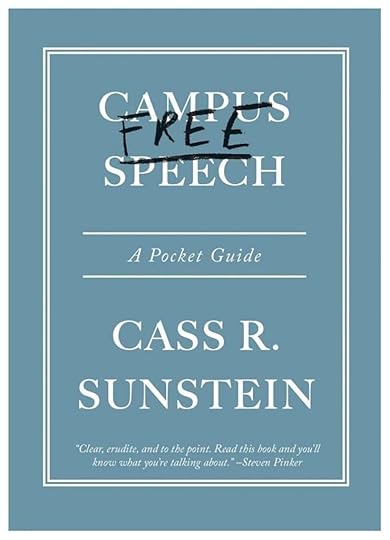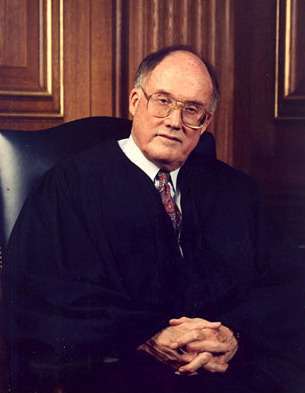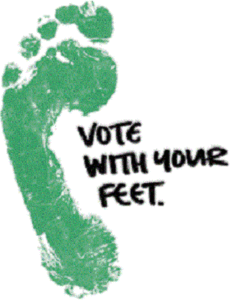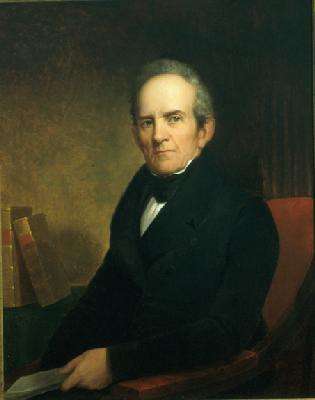Eugene Volokh's Blog, page 273
September 3, 2024
[Eugene Volokh] $1.85M Award in #TheyLied Lawsuit Over False Accusation of Rape
[The award consisted of $1.5M compensatory damages and $350K punitives.]
From the Smithfield Times (Stephen Faleski) Friday:
Virginia Beach lawyer Roger Hinde, 64, alleged in a 2022 lawsuit against 62-year-old Ana Meyers, also spelled "Myers" in other court documents, that the two met in August 2021 via the online dating website match.com and became engaged later that year. Hinde's lawsuit accused Meyers of "malicious prosecution" and "defamation and slander" for having gone to a magistrate days after the couple split up in May 2022 and taken out four felony warrants accusing Hinde of rape and three counts of sexual battery….
A background check Hines arranged on Meyers, according to his complaint, revealed her as the alleged owner of multiple properties and assets under a number of aliases and holding companies across the nation. By May 10 of that year, according to Hinde's complaint, Meyers had denied knowledge of the property and aliases that had turned up in Hinde's background check, and "made false claims that she suddenly did not feel safe with" Hinde, prompting him to offer to move out….
[When Hinde returned to collect his belongings], according to Hinde's complaint, … Meyers [struck] him and [threw] his phone to the ground. Court records indicate an assault and battery charge against Meyers resulting from the May 21, 2022, incident ended in a deferred disposition, which allows criminal defendants to avoid a conviction if they complete probation or community service. The rape allegation came a day later.
There are more details in the article. Thanks to James Creigh for the pointer.
The post $1.85M Award in #TheyLied Lawsuit Over False Accusation of Rape appeared first on Reason.com.
[Eugene Volokh] Cass Sunstein Guest-Blogging About "Campus Free Speech: A Pocket Guide"

I'm delighted to report that Prof. Cass Sunstein (Harvard) will be guest-blogging this week about this new book. Here's the publisher's summary:
From renowned legal scholar Cass R. Sunstein, a concise, case-by-case guide to resolving free-speech dilemmas at colleges and universities.
Free speech is indispensable on college campuses: allowing varied views and frank exchanges of opinion is a core component of the educational enterprise and the pursuit of truth. But free speech does not mean a free-for-all. The First Amendment prohibits "abridging the freedom of speech," yet laws against perjury or bribery, for example, are still constitutional. In the same way, valuing freedom of speech does not stop a university from regulating speech when doing so is necessary for its educational mission. So where is the dividing line? How can we distinguish reasonable restrictions from impermissible infringement?
In this pragmatic, no-nonsense explainer, Cass Sunstein takes us through a wide range of scenarios involving students, professors, and administrators. He discusses why it's consistent with the First Amendment to punish students who shout down a speaker, but not those who chant offensive slogans; why a professor cannot be fired for writing a politically charged op-ed, yet a university might legitimately consider an applicant's political views when deciding whether to hire her. He explains why private universities are not legally bound by the First Amendment yet should, in most cases, look to follow it. And he addresses the thorny question of whether a university should officially take sides on public issues or deliberately keep the institution outside the fray.
At a time when universities are assailed on free-speech grounds from both left and right, Campus Free Speech: A Pocket Guide is an indispensable resource for cutting through the noise and understanding the key issues animating the debates.
And the jacket blurbs:
"Campus free speech has suddenly become an issue on everyone's mind, featured in headlines about campus disruptions, controversial congressional testimony, and loss of trust in our institutions of higher education. Yet few people can articulate a coherent policy about free speech at colleges and universities. To the rescue comes Cass Sunstein, with a succinct and comprehensive primer. Clear, erudite, and to the point, Campus Free Speech lays out the underlying principles and the easy and hard cases. Read this book and you'll know what you're talking about when you talk about free speech and academic freedom."―Steven Pinker, author of Rationality and Enlightenment Now
"A thoughtful, fair-minded, and concise analysis by one of America's top legal scholars. Highly recommended for anyone interested in today's campus free speech controversies."―Eugene Volokh, cofounder of The Volokh Conspiracy
"At a time of national crisis regarding free speech on college and university campuses, Cass Sunstein's Campus Free Speech offers a truly brilliant and readily accessible analysis of how academic administrators, faculty, students, alumni, legislators, and others should think about these deeply troubling issues. No one interested in these challenges to our nation and its future should fail to read this book."―Geoffrey R. Stone, author of Perilous Times
"With this brilliant little volume, Cass Sunstein has achieved the near impossible: taking an extraordinarily complex area of First Amendment law and synthesizing it into a crisp, useful, and intellectually stimulating set of answers to free speech issues we see daily on America's college and university campuses. By any standard, a tour de force."―Lee C. Bollinger, author of Uninhibited, Robust, and Wide-Open
The post Cass Sunstein Guest-Blogging About "Campus Free Speech: A Pocket Guide" appeared first on Reason.com.
[Josh Blackman] Today in Supreme Court History: September 3, 2005
9/3/2005: Chief Justice William H. Rehnquist dies.
 Chief Justice William H. Rehnquist
Chief Justice William H. Rehnquist
The post Today in Supreme Court History: September 3, 2005 appeared first on Reason.com.
September 2, 2024
[Ilya Somin] Help Workers By Breaking Down Barriers to Labor Mobility

[Labor Day is the right time to remember that we can make workers vastly better off by empowering more of them to vote with their feet, both within countries and through international migration.]
 (NA)
(NA) Each Labor Day since 2021, 2022, I wrote posts explaining how breaking down barriers to labor mobility can help many millions of workers around the world. Virtually everything in last year's post is just as relevant today. So I am reprinting it with some updates and modifications:
Today is Labor Day. As usual, there is much discussion of what can be done to help workers. But few focus on the one type of reform that is likely to help more poor and disadvantaged workers than virtually anything else: increasing labor mobility. In the United States and around the world, far too many workers are trapped in places where it is difficult or impossible for them to ever escape poverty. They could vastly improve their lot if allowed to "vote with their feet" by moving to locations where there are better job opportunities. That would also be an enormous boon to the rest of society.
Internationally, the biggest barriers condemning millions to lives of poverty and oppression are immigration restrictions. Economists estimate that eliminating legal barriers to migration throughout the world would roughly double world GDP—in other words, making the world twice as productive as it is now. A person who has the misfortune of being born in Cuba or Venezuela, Zimbabwe or Afghanistan, is likely condemned to lifelong poverty, no matter how talented or hardworking he or she may be. If they are allowed to move to a freer society with better economic institutions, they can almost immediately double or triple their income and productivity. And that doesn't consider the possibility of improving job skills, which is also likely to be more feasible in their new home than in their country of origin.
The vast new wealth created by breaking down migration barriers would obviously benefit migrants themselves. But it also creates enormous advantages for receiving-country natives, as well. They benefit from cheaper and better products, increased innovation, and the establishment of new businesses (which immigrants create at higher rates than natives). Immigrants also contribute disproportionately to scientific and medical innovation, such as the MRNA Covid-19 vaccines, that have already saved many thousands of lives around the world.
Similar, though somewhat less extreme, barriers to labor mobility also harm workers within the United States. Exclusionary zoning prevents many millions of Americans—particularly the poor and working class—from moving to areas where they could find better job opportunities and thereby increase their wages and standard of living. Recent evidence suggests that the problem is even worse than scholars previously thought. Occupational licensing further exacerbates the problem, by making it difficult for workers in many industries to move from one state to another.
Breaking down barriers to labor mobility is an oft-ignored common interest of poor minorities (most of whom are Democrats), and the increasingly Republican white working class. Both groups could benefit from increased opportunity to move to places where there are more and better jobs and educational opportunities available.
As with lowering immigration restrictions, breaking down domestic barriers to labor mobility would create enormous benefits for society as a whole, as well as the migrants themselves. Economists estimate that cutting back on exclusionary zoning would greatly increase economic growth. Like international migrants, domestic ones can be more productive and innovative if given the opportunity to move to places where they can make better use of their talents.
Many proposals to help workers have a zero-sum quality. They involve attempts to forcibly redistribute wealth from employers, investors, consumers, or some combination of all three. Given that virtually all workers are also consumers, and many also have investments (e.g.—through their retirement accounts), zero-sum policies that help them in one capacity often harm them in another. Breaking down barriers to labor mobility, by contrast, is a positive-sum game that creates massive benefits for both workers and society as a whole; it similarly benefits both migrants and natives.
Some on the left point out that, if investors are allowed to move capital freely, workers should be equally free to move, as well. It is indeed true that, thanks to government policies restricting labor mobility, investment capital is generally more mobile than labor. It is also true that the restrictions on labor mobility are deeply unjust. In many cases, they trap people in poverty simply because of arbitrary circumstances of birth, much as racial segregation and feudalism once did. The inequality between labor and capital, and the parallels with segregation and feudalism should lead progressives to put a higher priority on increasing labor mobility.
At the same time, it is worth recognizing that investors and employers, as a class, are likely to benefit from increased labor mobility, too. Increased productivity and innovation create new investment opportunities. The biggest enemies of both workers and capitalists are not each other, but the combination of nativists and NIMBYs who erect barriers to freedom of movement, thereby needlessly impoverishing labor and capital alike. Despite conventional wisdom to the contrary, even current homeowners often have much to gain from curbing exclusionary zoning policies that block the construction of housing needed by workers seeking to move to the region.
On the right, conservatives who value meritocracy and reject racial and ethnic preferences, would do well to recognize that few policies are so anti-meritocratic as barriers to mobility. The case for ending them also has much in common with the case for color-blind government policies, more generally. A number of other conservative values also reinforce the case for curbing both domestic NIMBYism and immigration restrictions.
Obviously, there are those who argue against increasing labor mobility, either on the grounds that existing communities have an inherent right to exclude newcomers, or because allowing them to come would have various negative side-effects. I address these types of arguments here, and in much greater detail in Chapters 5 and 6 of my book Free to Move: Foot Voting, Migration, and Political Freedom. As I explain in those earlier publications, nearly all such objections are wrong, overblown, or can be ameliorated by "keyhole solutions" that are less draconian than exclusion. In addition, the vast new wealth created by breaking down barriers to mobility can itself be used to help address any potential negative effects. In the book, I also push back against claims that mobility should be restricted for the benefit of those "left behind" in migrants' communities of origin.
In recent years, there has been important progress on both expanding immigration and reducing exclusionary zoning. Several states have also enacted occupational licensing reform, which facilitates freedom of movement between states. But there is much room for further improvement on all these fronts. Moreover, especially when it comes to restrictions on international migration, we could easily get regression, rather than progress over the next few years. Unfortunately, we have to protect against backsliding, as well as promote improvement.
Workers of the world, unite to demand more freedom of movement!
The post Help Workers By Breaking Down Barriers to Labor Mobility appeared first on Reason.com.
[Josh Blackman] Today in Supreme Court History: September 2, 1819
9/2/1819: James Madison writes letter to Judge Spencer Roane criticizing McCulloch v. Maryland.
The post Today in Supreme Court History: September 2, 1819 appeared first on Reason.com.
[Eugene Volokh] Monday Open Thread
[What's on your mind?]
The post Monday Open Thread appeared first on Reason.com.
September 1, 2024
[Eugene Volokh] 2+ Years in Prison for Conspiracy to Threateningly Vandalize Homes of Journalists
The Boston Herald (Flint McColgan) reports:
One of the four men charged in a conspiracy to harass and intimidate a New Hampshire journalist for negative coverage of the founder of a mental health and addiction treatment center was sentenced to more than two years in federal prison.
U.S. District Court Judge Indira Talwani sentenced Tucker Cockerline, 33, of Salem, N.H., to 27 months in prison to be followed by three years of supervised release. Cockerline pleaded guilty in federal court in Boston last December to one count of conspiracy to commit stalking through interstate travel.
Cockerline was indicted along with co-conspirators Michael Waselchuck, Keenan Saniatan and Eric Labarge. All but Saniatan have entered plea agreements and Saniatan is expected to plead guilty in a change of plea hearing scheduled for Sept. 5….
The feds say that the intimidation campaign began in retaliation for the publication of an article on Eric Spofford, founder of the Granite Recovery Centers, in March 2022….
From the criminal charges in the U.S. v. Labarge case:
In March 2022, NHPR published an article on its website authored by Victim 1 and edited by Victim 2 detailing various allegations of sexual misconduct by a former New Hampshire resident and businessman (hereinafter, "Subject 1"). The article garnered significant local and some national media attention.
LABARGE was a close personal associate of Subject 1.
Beginning in or about March 2022 and continuing through at least May 2022, in response to [New Hampshire Public Radio's] reporting about Subject 1, LABARGE, SANIATAN, COCKERLINE, WASELCHUCK, and others known and unknown to the Grand Jury, agreed to harass and intimidate Victims 1 and 2—both NHPR employees—and their immediate family members.
In furtherance of the conspiracies, and as they had been instructed to do by LABARGE, SANIATAN, COCKERLINE and WASELCHUCK threw large rocks and bricks at the Victims' homes and spray painted the homes with lewd and threatening language [according to the rest of the charging document, that consisted of the word "cunt"]. The defendants' conduct caused, attempted to cause, and would be reasonably expected to cause substantial emotional distress to the Victims.
Thanks to the Media Law Resource Center (MLRC) MediaLawDaily for the pointer.
The post 2+ Years in Prison for Conspiracy to Threateningly Vandalize Homes of Journalists appeared first on Reason.com.
[Eugene Volokh] Hawaii Law Mandating Sealing of All "Medical and Health Records" Unconstitutional
From last week's decision in Civil Beat Law Center for the Public Interest, Inc. v. Maile, decided by Judge Richard Paez, joined by Judges Milan Smith and Lucy Koh:
Under the First Amendment, "the press and the public have a presumed right of access to court proceedings and documents." "By offering such protection, the First Amendment serves to ensure that the individual citizen can effectively participate in and contribute to our republican system of self-government." This right of access does not attach to every judicial proceeding or court record. But where the First Amendment right of access attaches, and "the State attempts to deny [that] right of access," "it must be shown that the denial is necessitated by a compelling governmental interest, and is narrowly tailored to serve that interest."
The Hawai'i Court Records Rules, which apply to all criminal and civil proceedings in Hawai'i state courts, require that all "medical and health records" be filed under seal without further order of a judge. We are asked to determine whether a state may mandate the categorical sealing of all "medical and health records" filed in any state court proceeding in order to protect the individual privacy rights of the subjects of those records, without any case-by-case consideration of the privacy interest implicated by the records or whether less restrictive alternatives exist to sufficiently protect that interest. We conclude that it may not….
Defendants argue that, even if the First Amendment grants a presumptive right of access to any "medical and health records," requiring that all such records be filed under seal is necessary to protect the individual right to privacy guaranteed by Hawaii's constitution and laws, such that the challenged provision does not run afoul of the First Amendment.
We agree that protecting an individual's constitutional and statutory right to privacy is a compelling interest that may justify sealing a particular medical or health record. As we have recognized, "[t]he need to protect individual privacy rights may, in some circumstances, rise to the level of a substantial governmental interest and defeat First Amendment right of access claims." But where, as here, the individual privacy interest implicated by a particular record may vary, the State of Hawai's general interest in protecting the privacy of its citizens cannot justify the categorical, mandatory sealing of every such record.
The individual right to privacy may justify closure where such a right is asserted by the affected individual and the court makes pre-closure findings as to the significance of the interest and necessity of closure. [Discussion of Supreme Court precedents omitted. -EV] … The individual privacy interest Defendants invoke will naturally vary across people, cases, and records. Not everything that might qualify as a medical or health record necessarily contains information that is private, and not everyone may care to keep every medical or health record private. And, even assuming that every filed record implicates an identically strong privacy interest, we expect that selective redaction could sufficiently protect that interest in many instances. Because the privacy interest implicated by a particular medical or health record can be protected just as well by a case-by-case determination of whether closure is truly necessary to protect the asserted interest, mandatory sealing is not the least restrictive means to protect that interest.
Under the Rules, as written, a litigant faces sanctions for publicly filing their own medical or health records, even if such records contain no private information, and even if the litigant wishes to make their private information public. In such cases, closure serves to protect no interest at all….
Defendants also urge us to uphold the mandatory sealing provision because case-by-case sealing would be more burdensome for courts, litigants, and members of the public. Defendants suggest that requiring case-by-case judicial evaluation of motions to seal would flood state courts with unnecessary litigation: because the Hawai'i constitution grants an individual right of privacy, parties moving to seal medical and health records would easily establish a compelling privacy interest sufficient to override public access. And members of the public would still need to challenge individual sealing motions in court. Such a procedure, Defendants contend, is both unnecessary and inefficient.
This argument is unpersuasive. We cannot agree with Defendants' assumptions that parties will move to seal every record that might constitute a medical or health record filed in state court, that the individual privacy interest will be equally strong as to every record, or that sealing will be the least restrictive means available to protect the privacy interest in every case. We therefore disagree that state courts would be burdened with unnecessary motions to seal; those courts are in the best position to evaluate whether the records at issue must, in fact, be sealed to protect any asserted privacy interest. And, perhaps most crucially, Defendants' argument ignores the presumption of openness granted by the First Amendment….
We are mindful of the "risks posed by remote electronic access to court filings," including privacy concerns. As we have explained, "nothing in our precedent prevents" courts from sealing records to which the presumptive public right of access attaches, "as long as [ ] courts decide motions to seal or redact on a case-by-case basis." And, "[t]o be sure, a court has the right to temporarily seal access to court records pending a hearing" on the motion to seal. Where the presumptive First Amendment right of access attaches, such a procedure ensures the protection of the individual right to privacy without unnecessarily burdening the constitutional rights of the public….
Here's the fact pattern that led to this particular lawsuit:
In 2020, Plaintiff Civil Beat moved to unseal the court-ordered competency evaluations of Ramoncito Abion. Abion was charged with assault after hitting a gas station employee with a hammer, then telling the arresting officer he heard voices and saw visions. A panel of three court-appointed examiners deemed Abion mentally fit for trial, although one suggested that, at the time of the offense, Abion was experiencing psychosis triggered by long-term methamphetamine use. When Abion sought to introduce that examiner's testimony in support of an insanity defense, the trial court held that drug-induced mental illness was not a defense under state law, excluded the examiner's testimony as irrelevant, and barred Abion from calling the examiner as a witness. The jury convicted Abion of assault.
Civil Beat filed a motion to unseal the competency evaluations in the Hawai'i Supreme Court while Abion's criminal appeal was pending in that court. Abion objected, arguing that the competency evaluations should remain sealed to protect his privacy. The Hawai'i Supreme Court declined to "unseal medical reports determining that [Abion] was fit to stand trial," construing the "medical and health records" that must be sealed under the Rules to include criminal responsibility and competency evaluations. The court did not explain its reasons for denying the motion to unseal; it offered no analysis beyond a citation to [the Records Rules] ….
The Hawai'i Supreme Court vacated Abion's conviction in a subsequent ruling, concluding that the trial court's exclusion of the examiner's testimony regarding methamphetamine-induced psychosis precluded Abion from presenting a complete defense….
Robert B. Black represents the Civil Beat Law Center.
The post Hawaii Law Mandating Sealing of All "Medical and Health Records" Unconstitutional appeared first on Reason.com.
[Josh Blackman] Today in Supreme Court History: September 1, 1823
9/1/1823: Justice Smith Thompson takes judicial oath.
 Justice Smith Thompson
Justice Smith ThompsonThe post Today in Supreme Court History: September 1, 1823 appeared first on Reason.com.
August 31, 2024
[Josh Blackman] Today in Supreme Court History: August 31, 1995
8/31/1995: Students at Santa Fe Independent School District voted to allow a student to say a prayer at football games. In Santa Fe Independent School Dist. v. Doe (2000), the Supreme Court declared this prayer unconstitutional.
 The Rehnquist Court
The Rehnquist CourtThe post Today in Supreme Court History: August 31, 1995 appeared first on Reason.com.
Eugene Volokh's Blog
- Eugene Volokh's profile
- 7 followers



